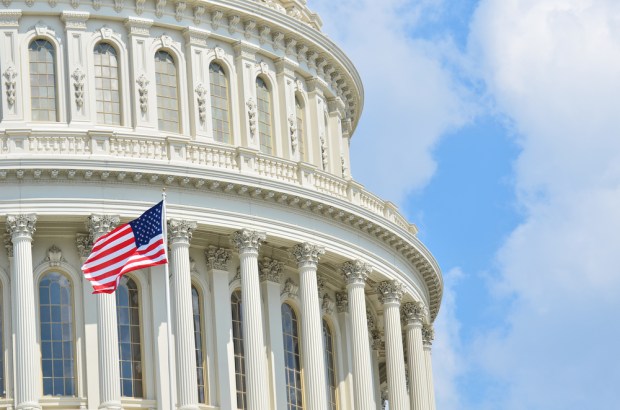US Lawmakers Debate Dueling Stablecoin Bill Drafts

U.S. lawmakers faced off Thursday (May 18) over two proposed stablecoin bills.
Both bills under consideration would allow both banks and non-banks to issue stablecoins.
It was the second time during the current congressional session that proposed stablecoin legislation has come to the floor, with the first hearing on April 18 quickly devolving into bipartisan bickering.
Thursday’s hearing, held by the Subcommittee on Digital Assets, Financial Technology and Inclusion and titled “Putting the ‘Stable’ in ‘Stablecoins’: How Legislation Will Help Stablecoins Achieve Their Promise,” saw two proposals under discussion — one pushed by Republicans and one by Democrats.
“We want for payment stablecoins to be used as a payment mechanism, which they’re really not today. And the only way we can do that is by passing the appropriate regulatory framework legislation,” said the subcommittee chairman, Representative French Hill (R-Arkansas).
Read More: Partisan Battle Lines See Crypto Stablecoin Payment Regulation Stalling Out
The debated pieces of legislation, one brought by the House Financial Services Committee Chairman Patrick McHenry as well as another introduced by its ranking member Maxine Waters, each offer ways of enacting regulation around the use of stablecoin digital payment instruments that differ in small, but crucial, ways.
“While we noticed two different legislative proposals today, we are not starting from scratch,” Hill said. “We have the power to cement the U.S. as the leading place for safe payments innovation.”
“Without action from Congress, offshore and opaque projects will continue to thrive and stablecoin issuers will not feel confident to seek opportunities in the United States, and to echo the hearing title, stablecoins will not be stable,” he added.
“Fiat-backed stablecoins represent an important but incremental improvement in the concept of money,” said witness Matthew Homer, the former executive deputy superintendent for research and innovation, New York State Department of Financial Services (NYDFS).
“Because stablecoins are an entry point into the broader digital asset ecosystem, they represent a logical starting point for a federal framework to regulate the industry overall,” explained Homer, noting that the NYDFS already regulates stablecoins.
A Tale of Two Stablecoin Frameworks
While the two proposed stablecoin bill drafts look similar, and they do share the same parent, McHenry’s draft gives more power to individual states in regulating the digital stablecoin payment instruments, as well as declares that state-qualified issuers who submit all required registration materials will be officially registered within 60 days of submission.
Waters’ version, for its part, specifies that the Federal Reserve can decline state-qualified payment stablecoins from registering on a federal level.
The ranking member’s discussion draft makes no changes to the current responsibilities or authorities of the U.S. Treasury, the Bureau of Consumer Financial Protection, the U.S. Securities Exchange Commission (SEC) or the Commodities Futures Trading Commission (CFTC) in regulating stablecoin issuers.
Institutions looking to issue stablecoins must apply through “the appropriate federal payment stablecoin regulator,” Waters’ proposed bill declares, which includes the Federal Reserve Board of Governors, the Comptroller of the Currency, the National Credit Union Administration and the Federal Deposit Insurance Corporation (FDIC).
McHenry’s proposed legislation separately takes pains to distinguish between payment stablecoins and tokenized bank deposits, which rather than representing a new financial product are instead a modern technical means of recording deposit claims against a bank using blockchain or distributed ledger technologies.
McHenry’s draft also leaves out any reference to central bank digital currencies (CBDCs), while Waters’ includes a Title II on the “Digital Dollar.” Critics allege that national CBDCs are unrelated to privately issued stablecoins and, therefore, a different beast entirely.
See Also: Hearings on Regulatory Gaps Do Little to Fill Them
Elsewhere, the American Bankers Association (ABA) issued a public statement arguing that the two stablecoin bills being proposed “fall short.”
Among the association’s quibbles with the two bills is the lack of “reporting akin to bank call reports,” with stablecoin issuers not being subject to public disclosure of periodic financial statements or third-party audits of those disclosures.
“Stablecoin issuers behave in many instances like a bank in that they facilitate payments, connect to investment platforms and store value … Applying the principle of ‘same activity, same risk, same regulation’ will help ensure that all customers are protected equally, regardless of where they engage with the financial marketplace and that the financial system remains strong, safe and competitive,” the ABA wrote.
Whichever regulatory framework comes out ahead among the two dueling candidates will head to the Senate.
Whether anything discussed Thursday (May 18) will ever be signed into law by the president remains to be seen.
For all PYMNTS crypto coverage, subscribe to the daily Crypto Newsletter.

